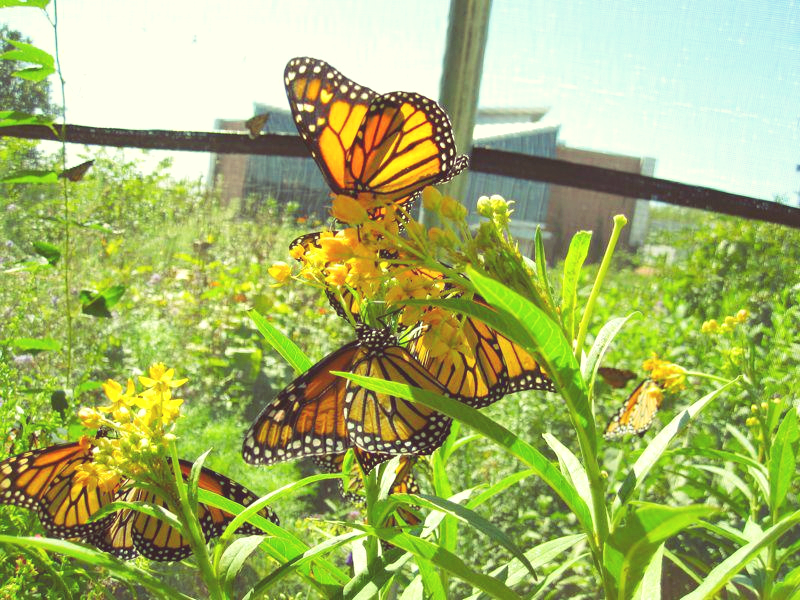
One thing that got me through this dreadfully long and cold winter was thoughts about my garden and my plans for creating (or at least trying to, a butterfly garden). There something so incredibly beautiful about spotting a butterfly fluttering around your garden. But there is one butterfly in particular that has seen it's number dramatically decline in the last 20 years - the Monarch butterfly. This keystone American species, well they really need your help.
Freak weather, the increasing use of genetically modified crops and a national shortage of milkweed have all contributed in the challenges a Monarch butterfly faces in it's 3,000 mile mitigation from as far north as Canada down to Mexico, the west coast of California or Florida. Yet there is a simple way to help - by planting milkweed. Why is this plant important? Well it's their only larval food source, the only plant they lay their eggs upon. But it's being increasingly removed by farmers and gardeners alike.
This vital source for the Monarch butterfly is pretty easy to get your hands on whether it's through a local garden center or online in either seeds or plants. Back in September I came across the seed program run by the Live Monarch Foundation which was started after the death of 80% of the entire monarch bleeding program in a extremely cold winter in Mexico back in 2002. Since then the foundation has come to promote the replanting of milkweed and the care of Monarch caterpillars. For a small donation (starting at $1 = 50 seeds and going upwards) plus postage (49c) you'll be sent some milkweed seeds suitable for your region with planting instructions. Within a two weeks my order had arrived and are being stored away in a drawer until spring and I can get to sow them in my garden. But it is important that pets are kept away from milkweed, as it's highly poisonous to cats and dogs.
Monarchs have been recorded in the UK, although there's only been about 500 recordings. Milkweed is not native to the UK so consider planting general butterfly loving plants - lavender, chives, purple cone flowers, sunflowers, holly, ivy, to just leaving in nettles, thistles and dandelions. There's a handy PDF that highlights RHS recommended plants for attracting butterflies if you're UK based (because I know a lot of my readers are all back in my homeland so I like to keep you all in the picture too!).
For me, my garden is as much about having an outside space as it is to help the wildlife. Whether it's a bee, a butterfly or a bird, my garden is for them as much as it is for me and something I hope to share more once it's back to proper gardening weather. So if you have that spare corner, think about helping out the wildlife.



No comments:
Post a Comment